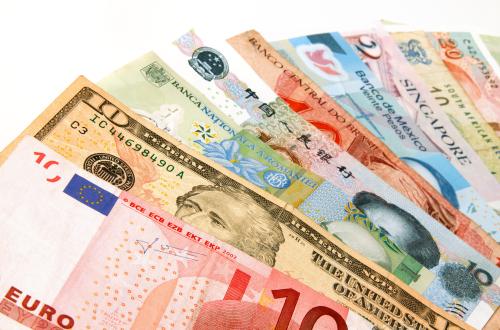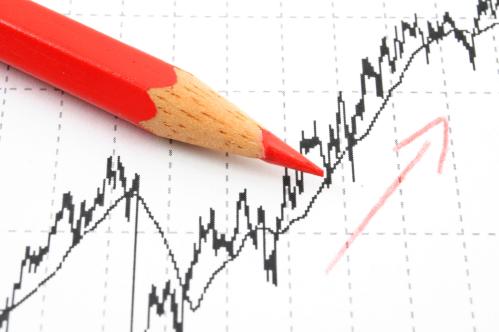Table 1 was updated on May 17, 2022 to reflect new data.
The IMF/World Bank Spring Meetings are a time when financing for sustainable development gets attention. This year, it was apparent that the main channels are clogged.
To see why, it is useful to start with an understanding of the core elements of sustainable development financing. There are many channels, each with its own drivers.
As Table 1 below shows, external financing in support of sustainable development objectives is in the range of $500 billion to $600 billion. These figures include a number of different sources of financing for sustainable investment, including aid, loans, and private flows. We adjust net official development assistance (ODA) for sums that cannot be used for sustainable development investments: donor administrative costs, in-country refugee charges, and humanitarian assistance. What’s left—approximating what is called country programmable aid—can be used for investments to achieve the Sustainable Development Goals (SDGs).
If developing countries can develop sound project pipelines and improve their policy and institutional structures and if advanced economies give political and financial backing to unclogging finance channels, it is possible to move the agenda forward.
The nature of official flows is reasonably well understood. Private flows are less easy to categorize, which we can divide into five categories: (i) lending to sovereigns and their enterprises through bond markets and syndicated bank credits; (ii) private philanthropy, which is now of significant proportions; (iii) private finance mobilized into investment projects in co-financing with multilateral agencies (the International Finance Corporation is the major mobilizer); (iv) private provision of infrastructure (mostly in electric power generation, but also toll roads and hospitals); and (v) impact investing into a variety of sectors.
The smaller channels of development finance are closing or showing little prospects for improvement in the short to medium term. For example, even though there is much excitement about environmental, social, and governance investments and sustainable bonds, very little of this money flows to developing countries, and there is an increasing backlash against “greenwashing.” Private philanthropy is large but not organized in a systematic way and responds to the preferences of individual donors rather than being directed to the SDGs. Much is in the form of in-kind donations. And the flows from large emerging economies like China and India have slowed dramatically, starting—in the case of China—well before the pandemic, and now becoming increasingly small as recipient countries shelve investment projects. From a policy perspective, other than the engagement of these creditors in debt relief (see below), there is little that can be done by policymakers in the short run to provide more resources.
For this reason, the real policy debate is over the three main channels that account for around two-thirds of the flows: aid, official nonconcessional lending, and private lending to sovereigns or to entities with a sovereign guarantee. Policymakers need to find a way to unclog these channels.
Table 1. Broadly defined net international development financing contributions (current USD, billions)

Source: Author’s calculations, based on data from OECD statistics, World Bank International Debt statistics, UN financial statistics, Boston University Global Development Policy Center, Government of India Ministry of External Affairs, Indiana University Lilly Family School of Philanthropy, OECD TOSSD, World Bank Private Participation in Infrastructure (PPI) database, and the Global Impact Investing Network (GIIN).
Aid
It is commendable that aid has continued to grow even while advanced economies have seen their own domestic situations worsen. Overall aid from Development Assistance Committee countries rose in 2020 and 2021, with increases from countries such as Germany, Sweden, Norway, the United States, and France. Multilateral aid rose even faster, with disbursements from the IMF’s Poverty Reduction and Growth Trust and the World Bank Group’s International Development Association (IDA) providing much-needed countercyclical financing. Aid continued to rise in 2021 and important international funds were replenished, including IDA and the Green Climate Fund.
However, aid in some important countries, notably the U.K., fell in 2020 and again in 2021. In aggregate, aid grew by 0.6 percent in 2021 in real terms, excluding vaccines for COVID-19. At one level, it is commendable that aid continued to grow despite real budget difficulties in every donor country. At another level, however, aid increases appear modest. The ODA increase in 2020 was modest—less than 0.1 percent of the $12 trillion that governments of donor countries spent on their domestic fiscal stimulus packages in 2020.
During the Spring Meetings, the pressures on aid were evident. Officials, especially from Europe, talked about needing to accommodate in-donor costs for housing Ukrainian refugees from aid budgets. Afghanistan, which prior to February 24 was expected to figure prominently in the discussions, was hardly brought up, and a U.N. appeal for humanitarian funding in March came up $2 billion short—the pledged amounts were 45 percent less than the estimated need. Afghanistan now has the highest infant and child mortality in the world.
Given the pressures on aid to respond to humanitarian crises, the Ukraine war, spillover impacts on food and fuel crises, potential debt crises, and the ongoing need for vaccinations and pandemic-related spending, prospects for increases in aid for sustainable development appear bleak.
Official nonconcessional lending
Official financial institutions provided $60 billion during 2020, almost entirely from multilateral institutions that stepped up countercyclical financing in response to the COVID-19 pandemic. Even this, however, was unable to prevent a bifurcated global recovery: Rich countries have mostly regained their pre-pandemic output levels, while developing countries still fall far short. A further concern is that the pandemic forced many developing country governments to slash investment spending and close schools, compromising the potential for future growth.
Against this backdrop, a major announcement at the Spring Meetings was the approval of the IMF’s Resilience and Sustainability Trust (RST) facility, funded in part through a reallocation of special drawing rights (SDRs) that had been issued to rich countries in the initial response to the pandemic. The RST is aiming to raise SDR 33 billion (roughly $45 billion equivalent). Its big breakthrough, however, is not the volume of funding but the terms: The loans will have a 20-year maturity, a 10 ½ year grace period, and an interest rate slightly above the SDR interest rate that is currently 0.5 percent.
Another major announcement was a second surge financing package by the World Bank Group, which aims to provide $170 billion in sustainable development finance over the 15 months between April 2022 and June 2023. However, the World Bank warns that this program will substantially erode the available capital of the International Bank for Reconstruction and Development (IBRD), the main lending arm of the World Bank to middle-income countries. IBRD will be forced to cut its lending by one-third in fiscal year 2024 and beyond under current assumptions.
Other multilateral development banks face the same problem as IBRD. They have lent considerable amounts to respond to the pandemic, leaving them undercapitalized as they look to the future. For this reason, the channel of providing more official nonconcessional lending is clogged.
Private capital
The Spring Meetings had their fair share of warnings about impending debt crises in developing countries and, indeed, credit ratings from the major agencies show that risk is rising. During 2020 and 2021, 42 developing countries had their credit rating downgraded by at least one of the three major ratings agencies, and an additional 33 had their outlook downgraded. The Common Framework for debt treatment beyond the debt service suspension initiative seems stuck. Only three countries are participating (Chad, Ethiopia, and Zambia) and negotiations in each case have been ongoing for too long, with progress measured more by process change than by actual results.
As a sharp reminder of why credit ratings are important, consider that developing countries with an investment grade rating pay an average real interest of 3.6 percent on borrowing from capital markets; those with less than investment grade ratings pay an additional 10 percentage points in interest. At those interest rates, it becomes very difficult to maintain creditworthiness. The only option for a finance minister is to avoid new borrowing and to try to limit fiscal deficits. This is why developing countries were complaining during the Spring Meetings about their lack of fiscal space. Given these conditions in financial markets, there is considerable pessimism that developing countries will be able to profitably return to capital markets on a broad scale.
The way forward
This assessment of what is blocking long-term finance for development suggests three main areas for policy action:
- Aid remains the cornerstone of sustainable development finance, but it is in such short supply relative to demand that it must be leveraged—through guarantees, funding institutional innovation, or providing fresh capital to development institutions.
- International financial institutions are an efficient way of leveraging capital but are rapidly running out of headroom. They will need fresh capital soon, or else middle-income developing countries will be left with few options. Small improvements may be possible on the margin through balance sheet optimization, but these are a distraction from the core need for additional funding.
- Private finance can only restart if new flows are protected from the legacy of existing debt. This means either accelerating debt workout or use of guarantees and other forms of risk pooling and risk shifting, preferential treatment for funds used for core SDG and climate investments, and/or lending to off-sovereign balance sheet public wealth funds or development banks.
If developing countries can develop sound project pipelines and improve their policy and institutional structures and if advanced economies give political and financial backing to unclogging finance channels, it is possible to move the agenda forward. Big asks—no wonder the mood at the Spring Meetings was somber.








Commentary
Financing for sustainable development is clogged
The message of the April 2022 Spring Meetings
May 11, 2022